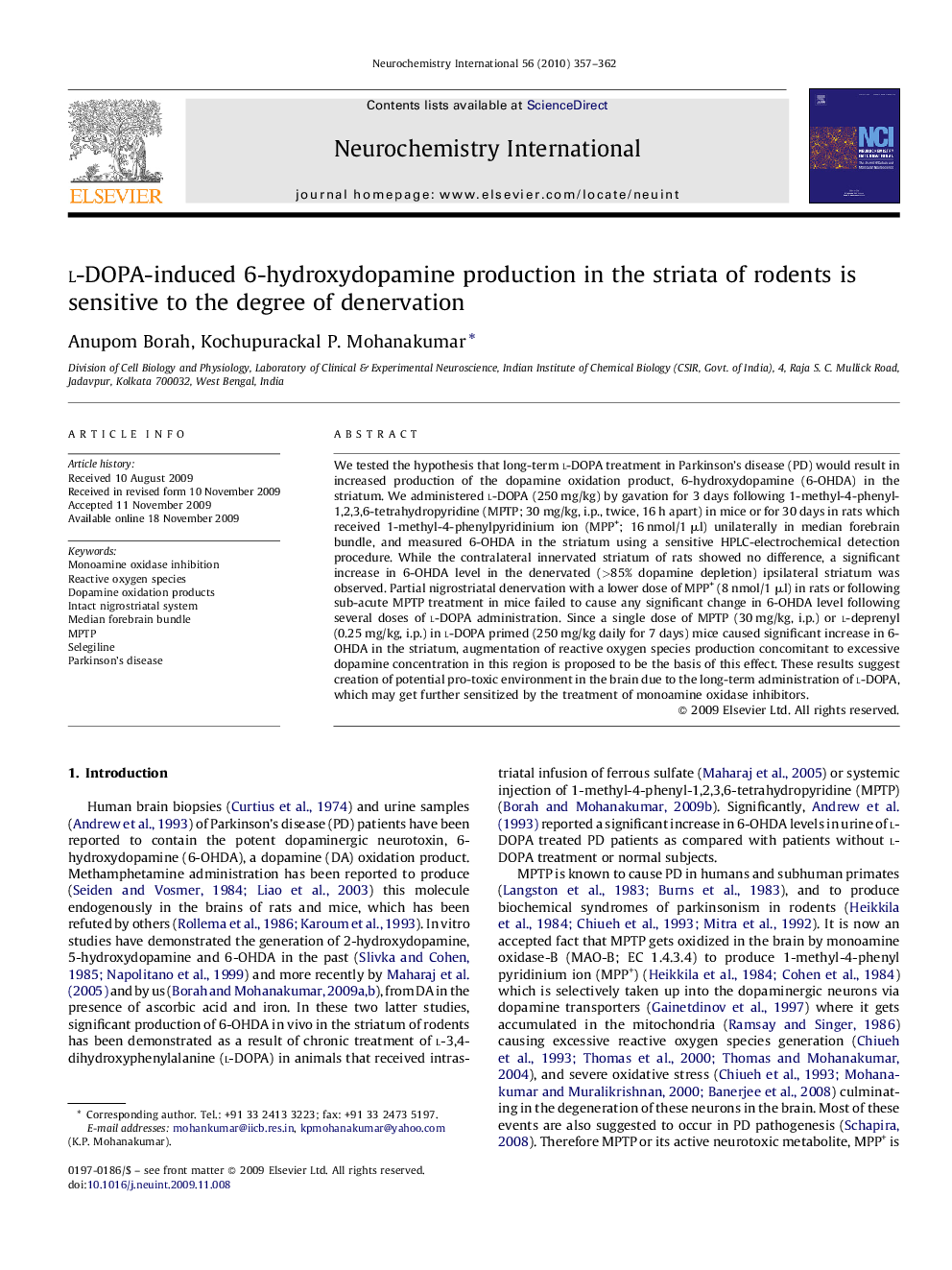| کد مقاله | کد نشریه | سال انتشار | مقاله انگلیسی | نسخه تمام متن |
|---|---|---|---|---|
| 2201576 | 1100026 | 2010 | 6 صفحه PDF | دانلود رایگان |

We tested the hypothesis that long-term l-DOPA treatment in Parkinson's disease (PD) would result in increased production of the dopamine oxidation product, 6-hydroxydopamine (6-OHDA) in the striatum. We administered l-DOPA (250 mg/kg) by gavation for 3 days following 1-methyl-4-phenyl-1,2,3,6-tetrahydropyridine (MPTP; 30 mg/kg, i.p., twice, 16 h apart) in mice or for 30 days in rats which received 1-methyl-4-phenylpyridinium ion (MPP+; 16 nmol/1 μl) unilaterally in median forebrain bundle, and measured 6-OHDA in the striatum using a sensitive HPLC-electrochemical detection procedure. While the contralateral innervated striatum of rats showed no difference, a significant increase in 6-OHDA level in the denervated (>85% dopamine depletion) ipsilateral striatum was observed. Partial nigrostriatal denervation with a lower dose of MPP+ (8 nmol/1 μl) in rats or following sub-acute MPTP treatment in mice failed to cause any significant change in 6-OHDA level following several doses of l-DOPA administration. Since a single dose of MPTP (30 mg/kg, i.p.) or l-deprenyl (0.25 mg/kg, i.p.) in l-DOPA primed (250 mg/kg daily for 7 days) mice caused significant increase in 6-OHDA in the striatum, augmentation of reactive oxygen species production concomitant to excessive dopamine concentration in this region is proposed to be the basis of this effect. These results suggest creation of potential pro-toxic environment in the brain due to the long-term administration of l-DOPA, which may get further sensitized by the treatment of monoamine oxidase inhibitors.
Journal: Neurochemistry International - Volume 56, Issue 2, January 2010, Pages 357–362